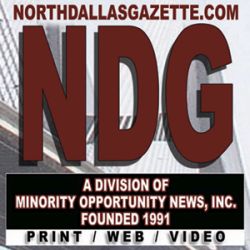By James Breedlove
Forty Six years have passed since Dr. Martin Luther King Jr. delivered his “I Have a Dream” speech on August 28, 1963 standing in front of the Lincoln Memorial during the March on Washington for Jobs and Freedom.
An estimated 250,000 civil rights supporters witnessed King’s oration that is considered by many to be one of the greatest speeches in human history and still remains an inspiration to millions of people around the world to this day.
The speech, though well received by the massive crowd, did not garner instant national or international acclaim. News reports following the event focused on the orderliness and non-violence of the participants. The New York Times headline was: “200,000 March for Civil Rights in Orderly Washington Rally- President [Kennedy] Sees Gain for Negro.” In most news accounts of the march Dr. King’s participation was buried deep inside the report.
There was an atmosphere of uncertainty and fear throughout Washington prior to the march. No one knew what to expect. People were afraid, sensing that a revolution was about to sweep the city. The administration had placed barricades along the streets and put troops out on alert in case something went wrong.
But the Baptist Preacher from Atlanta, speaking passionately and powerfully on a personal level to the people, did not provoke the crowd to violence. Instead, his eloquent rhetoric became a universal vocabulary for people the world over to understand the social and political unrest that existed and what needed to be done for the true meaning of the Declaration of Independence to be realized.
Each year there are parades, prayers, musicals, dinners, and speeches to pay homage to Dr. King’s legacy during his holiday celebration. The “I Have A Dream” speech is religiously recited on programs and excerpts are played on television and radio stations in solemn tributes. But 46 years later do those honoring the memory of Dr. King truly understand his Dream beyond the mesmerizing poetry of the speech?
The following excerpts from an analysis of Dr. King’s Dream Speech by Professor Hajii and his student Hassna Alfayez of King Saud University (KSU) in Saudi Arabia indicates not only the universal appeal of The Dream but the strong desire non-Blacks to fully understand this oratorical masterpiece.
Dr. King knew the authorities were carefully watching him and scrutinizing every word that came out of his mouth. Despite all this attention, he delivered the speech flawlessly and without fear.
He does not use just ordinary language to convey his message. He makes use of a number of semantics to enrich and make his message bold. He speaks of having come to the nation’s capital to cash a check and refers to the Declaration of Independence as a promissory note signed by the government.
Once a promissory note is signed one cannot go back on that promise and by this Dr. King was reminding as well as warning the government that they had to act on their promises and failure to do so would continue to be met with demonstrations across the country.
Dr. King reminds the authorities of having defaulted on their promissory note and the black people’s refusal to believe that there are “insufficient funds in the bank of justice” and that there are insufficient funds in the” great vaults of opportunity “of this nation. By invoking banking semantics Dr. King adds colorful meaning to his speech and keeps his audience attentive and wanting to hear more.
Martin Luther King chooses his words carefully to inspire in his audience the forceful attitude he wants them to adopt in their struggle for freedom while maintaining non violence. “We must forever conduct our struggle on the high plane of dignity and discipline. We must not allow our creative protest to degenerate into physical violence. Again and again we must rise to the majestic heights of meeting physical force with soul force.”
Words such as “dignity, discipline, creative protest, majestic heights, and soul force” inspire a sense of self worthiness and mature dignity in the audience.
Dr. King bonds with his audience when he tells them that he is not “unmindful” of their situation. He totally understands and shares their plight and hardship. He uses adjectives such as “storms and winds” in describing the audience’s fight for freedom. It is like a typhoon that twirls them around and rips them apart but they have to endure it with “creative and redemptive suffering” and go back to their towns, to their demeaning jobs and to their ghettos to continue their dignified struggle for freedom.
While using stimulating words to inspire his audience to seek their lost freedom at the same time he chooses his words carefully to control the potential physical effect of his inspirational rhetoric. He was protecting his hearers from any form of violence and brutality that might erupt after the speech and cause the troop patrols to take action.
Today, 46 years after the exhortation in Dr. Martin Luther King’s speech, Blacks and other minorities remain second-class citizens while being subject to political, economic, and educational stealth discrimination. This stealth discrimination is perhaps more dreadful and deadly than the overt discrimination that King addressed.
Dr. King has gone, but his dream and declaration on racial equality, freedom and justice remains to be fulfilled.
The key to making Dr. King’s dream a reality is to first fully understand the dream and the secret of change embedded in the Dream Speech.
James W. Breedlove
Comments or opinions may be sent to the writer at: www.truthclinic.com



